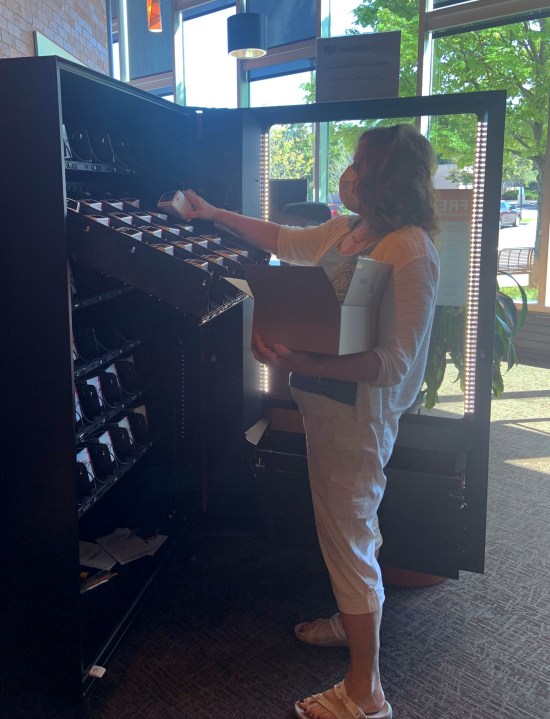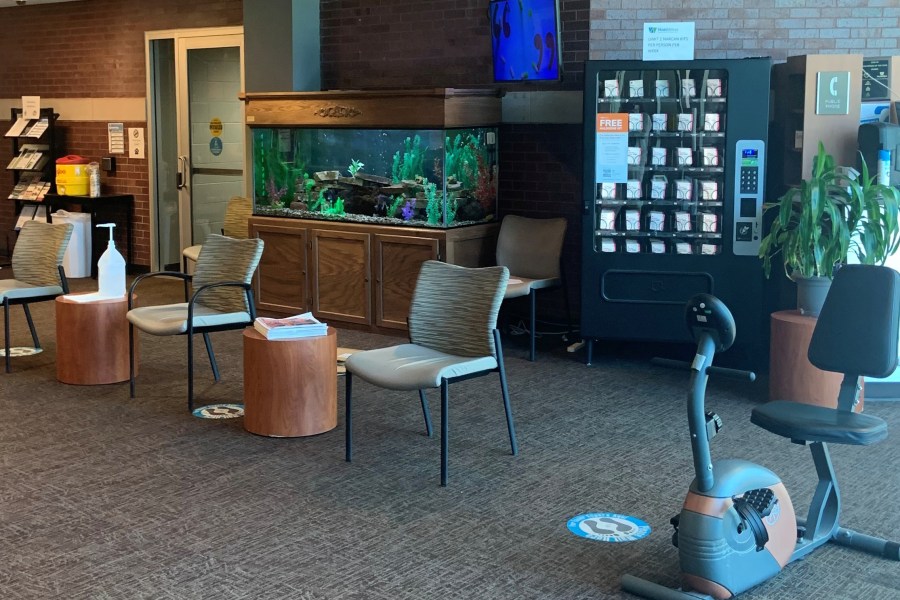Free naloxone vending machines gaining popularity
Testing on staging11
(NewsNation) — A new type of vending machine is popping up around the country — not one for a soda, but rather for the overdose-reversing drug Narcan, or its generic version naloxone.
From L.A. to New York, and Michigan to Texas, local governments, universities, health clinics and drug-user unions are installing free machines where people can take naloxone kits as needed.
“For a mom or whoever out there — if that’s their only tool, if that’s the only thing they can do for their loved one is to make sure they take another breath, that is something,” said Heather Wiegand, a licensed professional counselor based in Michigan.
Wiegand helped bring a vending machine to the HealthWest clinic in Muskegon, Michigan, and hopes these machines will become more common where people gather in rural areas, like police stations or libraries.
Since opening about a year ago, Wiegand estimates 1,500 kits have been passed out in HealthWest’s lobby, often taken by family or friends of someone with an addiction.
Programs making naloxone more publicly available have been linked to decreased deaths. After a state law changed allowing anyone access to naloxone, heroin users in Philadelphia were significantly more likely to reverse an overdose and return to a community distributor for refills, a 2018 study found.
One explanation for the success of this approach is that at least 30% of overdose deaths happen around another person.

Still, accessibility problems have lingered. In contrast, these vending machines don’t require health insurance or a prescription, are anonymous and are placed in neutral places, like in the lobby of a doctor’s office or outside a restaurant.
The goal is that people will keep a kit or two of the life-saving medication in their homes, cars or backpacks.
Recently, the NICE (Narcan in Case of Emergency) Project installed two machines in Austin, Texas that include QR codes directing users to online training on how to use the kits.
“While vending machines and ‘zero barrier’ might be a relatively new distribution method, showing people the dignity to stay alive is not an innovative idea,” the NICE Project said in a press release.
Naloxone, which usually comes as a nasal spray, “is a miracle medication in the face of an increasingly unreliable street drug supply,” NICE said. It halts an overdose for 30-90 minutes, reversing the effects of opioids on the brain until emergency medical teams can arrive.
Yet only one naloxone prescription is dispensed for every 70 high-dose opioid prescriptions, according to the Centers for Disease Control and Prevention. That doesn’t include the millions more who say they’ve taken illegal opioids — much more likely to contain lethal fentanyl — over the now decades-long crisis.
A 2021 survey showed people who use opioids often do not know of many places to get naloxone or thought it was difficult to obtain. In fact, it is available at many pharmacies without an individual prescription.
Still, it is more difficult to find naloxone in suburban and rural counties — particularly in areas where addiction stigma is high and public transit is lacking, according to the same survey published in the Harm Reduction Journal. Multiple studies show that naloxone is very safe, and its availability does not encourage or increase drug use.

For the vending machines to be most effective, people with substance use disorder need to be connected to a larger community of resources, Wiegand said.
HealthWest’s machine is funded by a project at Wayne State University, replenished by workers at the clinic, and monitored by staff who can point individuals to food, shelter or job placement.
Experts say people also need to be trained in the signs of an overdose and how to use both the injectable and nasal spray forms of the medicine, according to the National Institute on Drug Abuse.
That’s more difficult under this model, although many vending machines provide printed instructions inside packages in addition to the contact information on the display case.
“When you see the life go out of someone, your life changes. And when you see the life come back into someone, your life changes again,” Wiegand said. “It gives back every opportunity to a person to change their course.”
